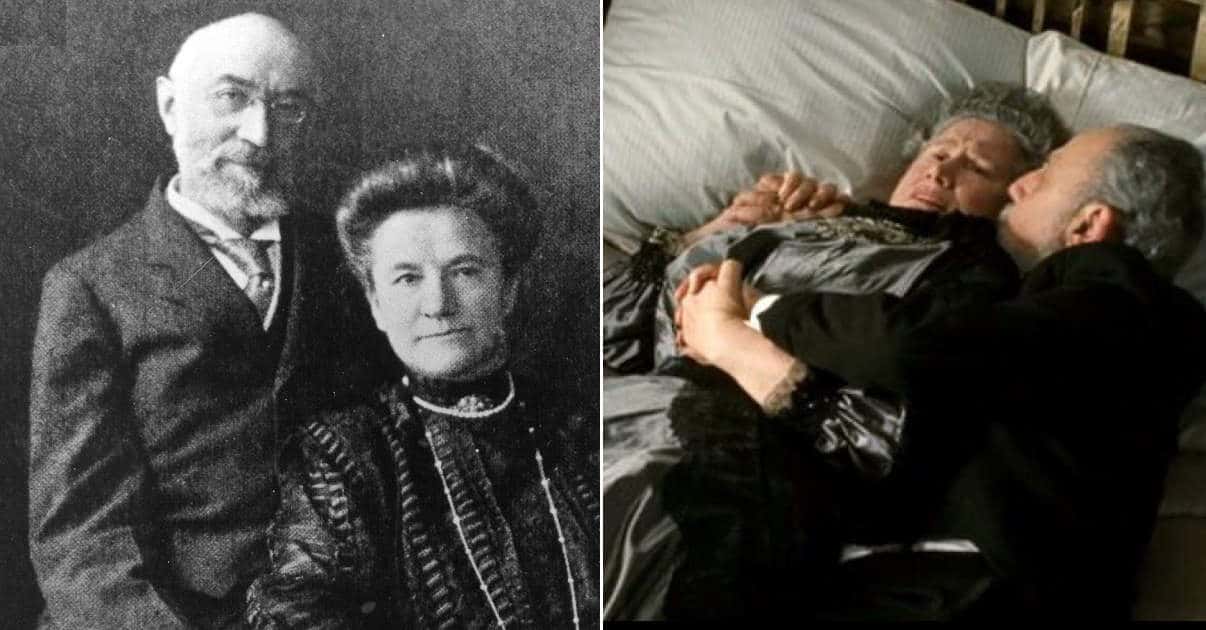We all remember the scene. As the incongruously dulcet soundtrack of “Near My God to Thee” stoically played by Titanic‘s band, chaos and confusion reign aboard the foundering giant. Men and women cry out in pain and fear as the icy waters pin them down in Titanic‘s grand stairwell. Below deck, a third class, red-haired Irish mother reads her children a story, holding back the tears in the knowledge this is the last time she will put them to bed. And with water gushing into their cabin, an elderly couple tightly hold onto each other; love’s tender affection an anesthetic to their imminent deaths.
Poignant though the image might be, it is just that: an image, created by James Cameron for his 1997 film. We know that the actors walked away- safe above water – to live happy lives. But before you put away the tissues, there is something important to know: The elderly couple cuddling in bed until the bitter end is based on a real couple. 67-year-old Mr Isidor Straus and 63-year-old Mrs Rosalie Ida Straus. The husband and wife showed considerable courage and devotion in the early hours of April 15 1912, both to each other and to friends and strangers around them. Theirs is a shining example of altruism and self-sacrifice that shone out from the freezing darkness of that fateful night.

Isidor Straus was born in Bavaria in 1845. He emigrated with his family to America when he was just nine, settling in Talbotton, Georgia. There, his father started the dry goods company “L. Straus & Company”. Isidor worked as a clerk in his father’s business, maintaining the role when the family—and the business—relocated to Columbus. At the end of the Civil War in 1865, and having just paid off all his debts in Talbotton, a practically penniless Isidor moved to New York with his brother.
He quickly found employment at the jeweller’s R. H. Macy & Co., and years later he would go on to take over the company. A famous philanthropist, Isidor then moved on to a career in politics, serving as New York’s congressman from 1895 to 1897. It was in New York that he met Ida. The two married in 1871, having seven children together. The years did nothing to lessen the intimacy and affection they shared; they would often travel together on business, and when unable to do so would write letters to each other every day.

The Strauses had been in Europe throughout 1911 and 1912. They had wanted to travel back to the US on another ship but, because of a coal strike in England, were diverted onto the Titanic. Typical of Titanic‘s wealthy passengers, the Strauses occupied multiple cabins (C-55-57): space enough to accommodate Isidor’s manservant, John Farthing, and Ida’s maid, Ms Ellen Bird. We know exactly what Ida thought about her accommodation because she told us herself in a letter. Sent on Wednesday April 10, four days before the ships struck the iceberg, she wrote to her friend Mrs Burbridge describing her experience aboard:
“But what a ship! So huge and magnificently appointed. Our rooms are furnished in the best of taste and most luxuriously and they are really rooms not cabins. But size seems to bring its troubles – Mr Straus, who was on deck when the start was made, said that at one time it stroked painfully near to the repetition of the Olympic’s experience on her first trip out of the harbor, but the danger was soon averted and we are now well on to our course across the channel to Cherbourg.”

